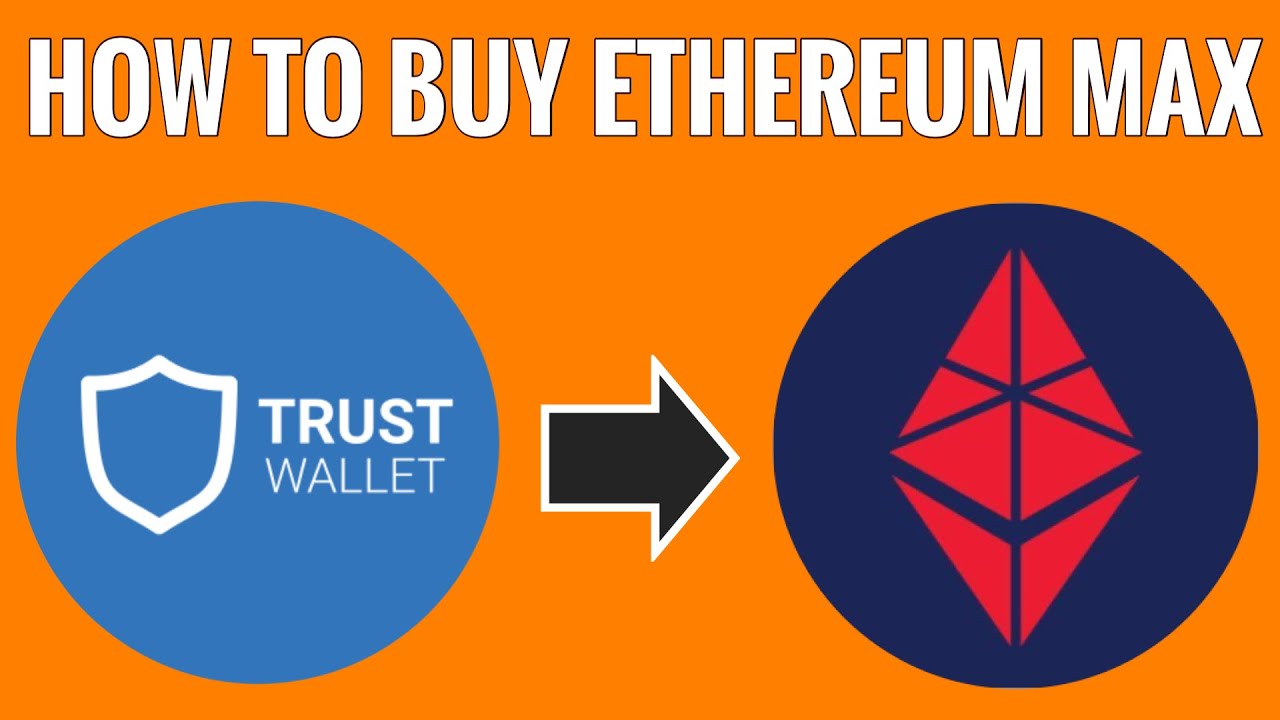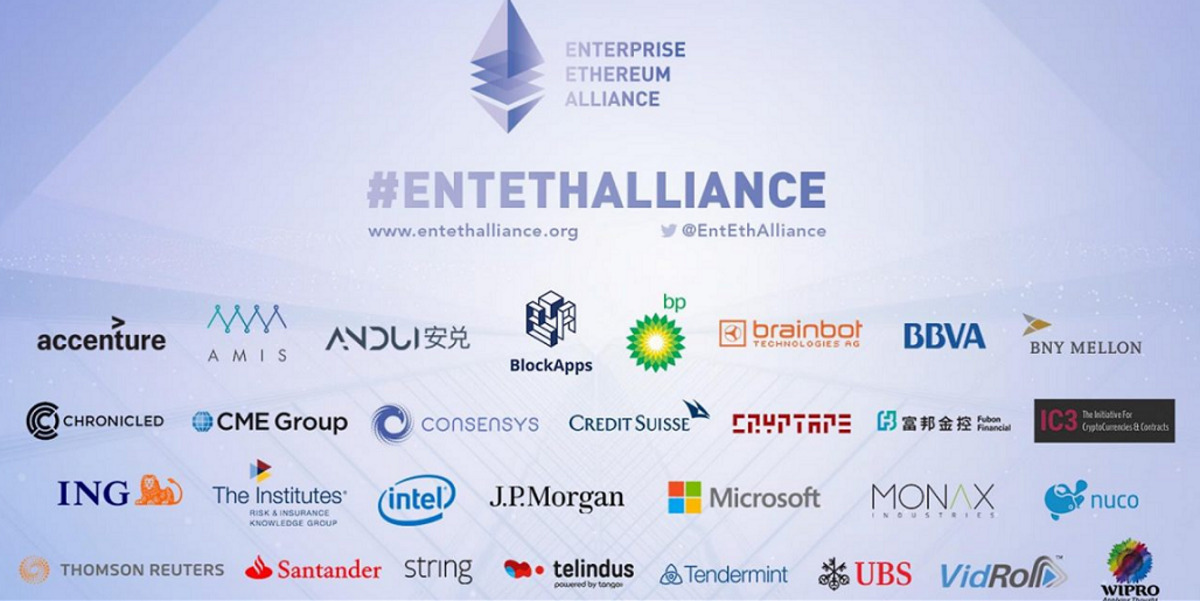Introduction
Welcome to the world of Ethereum trading! In this ever-evolving digital landscape, cryptocurrencies have taken the financial markets by storm. Among the many cryptocurrencies out there, Ethereum has emerged as one of the most popular and promising options for investors and traders alike.
But what exactly is Ethereum, and why should you consider trading it? In this article, we will delve into the world of Ethereum trading, exploring its benefits, risks, and tips for success. Whether you are a seasoned trader or just beginning to dip your toes into the cryptocurrency market, this guide will provide you with valuable insights and knowledge to navigate the world of Ethereum trading.
Before we dive into the details, let’s start with a brief overview of what Ethereum is. Ethereum is a decentralized, open-source blockchain platform that allows developers to build and deploy smart contracts and decentralized applications (DApps). It was created by Vitalik Buterin in 2015 and has gained substantial traction and popularity in recent years.
Unlike traditional financial systems, Ethereum operates on a peer-to-peer network, without the need for intermediaries such as banks or governments. Its underlying currency, Ether (ETH), serves as a form of digital currency that can be traded and used within the Ethereum network.
Now that we have a basic understanding of Ethereum, let’s explore why trading this cryptocurrency can be a lucrative opportunity for investors. Cryptocurrency trading, including Ethereum trading, offers several advantages over traditional forms of trading.
Firstly, cryptocurrency markets operate 24/7, allowing traders to participate at any time, regardless of their geographical location. This 24/7 accessibility provides greater flexibility and opportunities to capitalize on market movements.
Additionally, the volatility of cryptocurrencies, including Ethereum, presents ample opportunities for profit. The prices of cryptocurrencies can experience significant fluctuations within short periods, allowing traders to take advantage of price movements and generate substantial profits.
Moreover, Ethereum trading offers a high level of liquidity, meaning that traders can easily buy or sell their Ether holdings without impacting the market price. This liquidity ensures that traders can enter and exit positions quickly, allowing for efficient trading strategies.
However, it is important to acknowledge that Ethereum trading does come with its own set of risks. The highly volatile nature of cryptocurrencies means that prices can experience sharp and sudden fluctuations. Therefore, traders need to exercise caution and implement risk management strategies to protect their capital.
In the following sections, we will explore how Ethereum trading works, the risks involved, and provide tips for successful trading. By equipping yourself with the right knowledge and understanding, you can navigate the Ethereum market with confidence and increase your chances of success.
What is Ethereum?
Ethereum is an open-source blockchain platform that enables the creation and execution of smart contracts and decentralized applications (DApps). It was developed by Vitalik Buterin and launched in 2015, building upon the success of Bitcoin’s blockchain technology.
At its core, Ethereum is a decentralized network of computers known as nodes. These nodes work together to validate and record transactions on the Ethereum blockchain. Unlike traditional financial systems that rely on intermediaries like banks, Ethereum operates on a peer-to-peer basis, removing the need for middlemen and providing participants with direct control over their digital assets.
One of the fundamental features of Ethereum is its ability to execute smart contracts. Smart contracts are self-executing contracts with predefined conditions and rules written into code. These contracts operate automatically once the conditions are met, eliminating the need for intermediaries and ensuring transparency and efficiency in transactions.
Furthermore, Ethereum enables the development and deployment of decentralized applications, or DApps. DApps are applications that run on a decentralized network, such as Ethereum, rather than a centralized server. This decentralized nature ensures that DApps are resistant to censorship and provide users with a more secure and transparent experience.
What sets Ethereum apart from other cryptocurrencies is its native currency, Ether (ETH). Ether serves as both a digital currency and a utility token within the Ethereum ecosystem. It is used to power transactions, execute smart contracts, and incentivize network participants to maintain and secure the Ethereum blockchain.
Ethereum’s capabilities and versatility have fueled its widespread adoption and contributed to its success. The platform has become a breeding ground for innovation, attracting developers from various industries to build decentralized applications and explore the potential of blockchain technology.
As Ethereum continues to evolve, its community of developers and enthusiasts actively contribute to its growth. Through Ethereum Improvement Proposals (EIPs), community members propose and discuss upgrades and enhancements to the Ethereum network, ensuring its continuous development and adaptability to new challenges and opportunities.
Overall, Ethereum represents a groundbreaking advancement in blockchain technology. Its ability to execute smart contracts and support the development of decentralized applications has opened up a world of possibilities in finance, supply chain management, gaming, and various other industries. By harnessing the power of Ethereum, individuals and organizations can revolutionize the way we interact, transact, and build applications in the digital age.
What is cryptocurrency trading?
Cryptocurrency trading refers to the buying and selling of digital currencies, also known as cryptocurrencies, in order to take advantage of price fluctuations and potentially generate profits. It involves speculating on the price movements of cryptocurrencies and executing trades through online platforms, known as cryptocurrency exchanges.
Cryptocurrencies, such as Bitcoin, Ethereum, and Litecoin, operate on decentralized networks using blockchain technology. These digital assets have gained popularity due to their secure and transparent nature, as well as the potential for high returns on investment.
Cryptocurrency trading offers several advantages over traditional forms of trading. Firstly, cryptocurrencies trade on global markets that operate 24/7, allowing traders to participate at any time. This accessibility provides flexibility and the opportunity to react to market movements in real-time.
Furthermore, the cryptocurrency market is highly volatile, meaning that prices can experience significant fluctuations within short periods. This volatility presents opportunities for traders to profit from both upward and downward price movements. However, it is important to note that with higher volatility comes higher risk, and traders should carefully manage their positions to protect their capital.
There are different approaches to cryptocurrency trading, including day trading, swing trading, and long-term investing. Day trading involves executing multiple trades within a single day, taking advantage of short-term price fluctuations. Swing trading involves holding positions for a few days to a few weeks to capture larger price movements. Long-term investing, on the other hand, involves holding positions for an extended period, believing in the long-term success and growth of a particular cryptocurrency.
To start cryptocurrency trading, one must open an account on a cryptocurrency exchange. These exchanges provide a platform for buying, selling, and storing cryptocurrencies. They offer various trading pairs, allowing traders to exchange one cryptocurrency for another or trade cryptocurrencies against fiat currencies like the US Dollar or Euro.
When trading cryptocurrencies, it is essential to have a strategy in place. This includes conducting thorough research, analyzing market trends, and identifying potential entry and exit points for trades. Technical analysis, using charts and indicators, can be helpful in predicting price movements, while fundamental analysis involves assessing the underlying factors that could impact a cryptocurrency’s value.
Risk management is a crucial aspect of cryptocurrency trading. Traders should set clear profit targets and stop-loss levels to limit potential losses. Diversification is also important, as investing in a range of cryptocurrencies can help mitigate risk and maximize potential returns.
In summary, cryptocurrency trading involves speculating on the price movements of digital currencies to generate profits. It offers accessibility, volatility, and the potential for high returns. However, it is important to approach cryptocurrency trading with caution and develop a solid trading strategy to effectively manage risk and increase the chances of success.
Why trade Ethereum?
Ethereum has emerged as one of the most popular cryptocurrencies in the market, and trading it presents numerous opportunities and advantages for investors. Here are some compelling reasons why you should consider trading Ethereum:
1. Strong Potential for Growth: Ethereum’s innovative technology and its potential to revolutionize various industries have made it a highly sought-after cryptocurrency. As the Ethereum network expands and more decentralized applications (DApps) are built upon it, the demand for Ether (ETH), the native cryptocurrency of Ethereum, is likely to increase, potentially leading to price appreciation in the long term.
2. High Liquidity: Ethereum is one of the most liquid cryptocurrencies, which means it can be easily bought and sold without significantly impacting its price stability. This high liquidity allows traders to enter and exit positions quickly, ensuring efficient execution of trades.
3. Volatility: Volatility in the cryptocurrency market means that prices can experience significant fluctuations within short periods. While volatility may be seen as a risk, it also presents opportunities for traders to profit from price movements. Ethereum, like other cryptocurrencies, is known for its volatility, creating potential trading opportunities for astute traders.
4. Diverse Trading Options: Ethereum offers a wide range of trading options. In addition to trading Ethereum against fiat currencies like the US Dollar or Euro, it can also be traded against other cryptocurrencies. This allows traders to take advantage of price discrepancies and engage in various trading strategies, such as arbitrage or hedging.
5. Development of Decentralized Finance (DeFi) Applications: Ethereum has become the primary platform for decentralized finance (DeFi) applications. These applications aim to provide financial services and products without the need for intermediaries. The growth of DeFi has created new opportunities for traders to participate in lending, borrowing, yield farming, and other innovative financial activities.
6. Established and Active Community: Ethereum has a strong and vibrant community of developers, entrepreneurs, and enthusiasts who actively contribute to its development and adoption. This active community ensures that Ethereum remains at the forefront of blockchain technology, driving its growth and sustainability.
7. Potential for Passive Income: Ethereum holders have the opportunity to earn passive income through various mechanisms such as staking or participating in liquidity pools. Staking involves locking up Ether in the Ethereum network to support its security and operations, and in return, receiving rewards in the form of additional Ether. This enables traders to earn a consistent income while holding their Ethereum investments.
These are just some of the reasons why Ethereum trading has gained popularity among investors and traders. However, it is important to note that trading cryptocurrencies involves risks, including the potential for losses. It is advisable to conduct thorough research, implement risk management strategies, and trade responsibly.
How does Ethereum trading work?
Ethereum trading involves buying and selling Ether (ETH), the native cryptocurrency of the Ethereum network, with the goal of making a profit from its price fluctuations. Here’s a breakdown of how Ethereum trading works:
1. Choose a Trading Platform: To start trading Ethereum, you need to choose a reputable cryptocurrency exchange or trading platform. Ensure that the platform provides access to Ethereum trading pairs and offers robust security measures to protect your funds.
2. Open an Account: Once you’ve selected a trading platform, you’ll need to open an account. This typically involves completing a registration process and providing necessary identification documents as required by the platform. After opening an account, you may need to deposit funds into your trading account to start trading.
3. Analyze the Market: Before executing any trades, it’s essential to analyze the market and understand Ethereum’s price movements. Use technical analysis tools, such as charts and indicators, to identify trends, support and resistance levels, and potential entry and exit points for your trades. Fundamental analysis can also be valuable to consider factors that may impact Ethereum’s price, such as news, developments, and market sentiment.
4. Place Buy or Sell Orders: Once you’ve conducted your analysis and decided on a trading strategy, you can place buy or sell orders accordingly. If you believe the price of Ethereum will rise, you can place a buy order to acquire Ether. Conversely, if you anticipate a price decline, you can place a sell order to sell the Ether you currently hold or take a short position to profit from the price decrease.
5. Monitor and Manage Your Trades: After placing your orders, it’s crucial to monitor your trades and manage them effectively. Keep an eye on the market and any significant price movements. Consider setting stop-loss orders to limit potential losses and take-profit orders to secure profits at your target levels. Regularly review and adjust your trading strategy as market conditions change.
6. Consider Trading Tools and Strategies: Various trading tools and strategies can enhance your Ethereum trading experience. For example, you may consider using limit orders to buy Ethereum at a specific price or stop orders to automatically trigger a trade when the price reaches a certain level. Additionally, advanced trading strategies like margin trading and futures contracts can provide opportunities for larger potential profits, but they also carry additional risks.
7. Stay Informed: Stay updated on the latest news, regulatory developments, and market trends that can impact Ethereum’s price and overall cryptocurrency market. Follow reputable sources, join online communities, and engage with fellow traders to gain valuable insights and make more informed trading decisions.
Remember, Ethereum trading involves risks, including the potential for losses. It’s essential to approach trading with caution, set realistic expectations, and implement risk management measures. Start with smaller positions and gradually increase your exposure as you gain more experience and confidence in your trading abilities.
By understanding how Ethereum trading works and continuously learning and adapting your trading strategies, you can increase your chances of success in the dynamic and exciting world of cryptocurrency trading.
What are the risks of Ethereum trading?
While Ethereum trading offers lucrative opportunities, it is important to recognize and understand the risks involved. Here are some key risks to consider before engaging in Ethereum trading:
1. Price Volatility: Ethereum, like other cryptocurrencies, is known for its significant price volatility. Prices can experience rapid and substantial fluctuations within short periods, making it challenging to predict and time the market accurately. This volatility can lead to potential losses if trades are not carefully managed.
2. Market Manipulation: The cryptocurrency market is relatively young and less regulated compared to traditional financial markets. This lack of regulation can make the market susceptible to manipulation by large players, leading to artificial price movements and potential losses for individual traders.
3. Liquidity Risks: While Ethereum is generally considered a liquid cryptocurrency, there can be instances of low liquidity in specific trading pairs or during periods of high market volatility. Low liquidity may result in wider spreads and slippage, which can impact trade execution and potentially lead to unexpected losses.
4. Regulatory and Legal Risks: The regulatory landscape surrounding cryptocurrencies is still evolving in many jurisdictions. New regulations or legal restrictions could impact the trading of Ethereum and other cryptocurrencies, potentially leading to increased compliance costs or limitations on trading activities.
5. Security Risks: Storing and trading Ethereum involves digital security risks. Hackers and cybercriminals may attempt to compromise cryptocurrency exchanges or individual wallets to gain unauthorized access to funds. It is crucial to use secure exchanges and implement robust security measures, such as two-factor authentication and secure storage solutions, to safeguard your Ethereum holdings.
6. Technical Risks: The Ethereum network, like any other technology, is susceptible to technical glitches, system failures, or network congestion. Blockchain forks or software vulnerabilities can potentially impact trading activities and disrupt the execution of trades, leading to financial losses.
7. Emotional and Psychological Risks: Emotional decision-making and psychological biases can negatively impact trading outcomes. FOMO (Fear of Missing Out) and FUD (Fear, Uncertainty, and Doubt) can influence trading decisions, leading to impulsive actions or holding onto losing positions for too long. It’s essential to manage emotions, maintain discipline, and follow a well-defined trading strategy.
8. Loss of Private Keys: Ethereum wallets are typically secured with private keys. If these private keys are lost, stolen, or forgotten, access to the associated Ethereum holdings may be permanently lost. It is crucial to securely store and back up private keys to prevent the risk of losing your Ethereum assets.
It is important to thoroughly assess and understand these risks before engaging in Ethereum trading. Implementing risk management strategies, such as setting stop-loss orders, diversifying your trading portfolio, and only trading with funds you can afford to lose, can help mitigate potential losses and protect your overall investment.
By being aware of these risks and staying informed about market trends and developments, you can make more informed trading decisions and navigate the Ethereum trading landscape with greater confidence and resilience.
Tips for successful Ethereum trading
Ethereum trading can be a rewarding venture if approached with the right knowledge and strategies. Here are some tips to help you succeed in Ethereum trading:
1. Educate Yourself: Take the time to understand the fundamentals of Ethereum, blockchain technology, and the factors that can influence its price. Stay updated with news, trends, and developments in the cryptocurrency market to make more informed trading decisions.
2. Develop a Trading Strategy: Define a clear trading strategy based on your risk tolerance, investment goals, and preferred trading style. Identify entry and exit points, determine the size of your positions, and establish risk management techniques such as stop-loss orders to protect against potential losses.
3. Start with a Demo Account: If you are new to Ethereum trading or cryptocurrency trading in general, consider practicing with a demo account first. Demo accounts allow you to trade with virtual funds, gaining experience and confidence without risking real money.
4. Use Technical Analysis: Utilize technical analysis tools and indicators to identify patterns, trends, and potential reversal points in Ethereum’s price. Tools like moving averages, support and resistance levels, and oscillators can help you make informed trading decisions.
5. Diversify Your Portfolio: Avoid putting all your investments into a single cryptocurrency or trading strategy. Diversify your portfolio by considering other cryptocurrencies and different trading pairs. This helps spread out the risk and allows you to capitalize on a broader range of market opportunities.
6. Manage Risk: Implement risk management techniques such as setting stop-loss orders and adhering to predetermined risk-reward ratios. Be disciplined and avoid emotional trading decisions that may lead to impulsive actions or excessive exposure to risk.
7. Stay Disciplined: Stick to your trading plan and avoid making impulsive decisions based on market hype or fear. Emotions can cloud judgment and lead to trading errors. Follow a disciplined approach and trust in your established strategy.
8. Stay Informed: Stay updated with market news, regulatory changes, and the latest developments in the Ethereum ecosystem. Join reputable online communities, follow industry experts, and engage in discussions to gain valuable insights and perspectives.
9. Manage Your Capital: Only invest funds that you can afford to lose. Consider allocating a specific portion of your investment capital to Ethereum trading and diversify your investments across different asset classes to mitigate risk.
10. Practice Proper Security Measures: Protect your Ethereum holdings by using secure wallets, enabling two-factor authentication, and regularly updating your software. Be cautious of phishing attacks and suspicious links. Safeguarding your private keys is essential to prevent unauthorized access to your funds.
11. Keep a Trading Journal: Maintain a trading journal to track your trades, record your observations, and analyze your performance over time. This helps you identify strengths, weaknesses, and areas for improvement in your trading strategy.
12. Continuously Learn: The cryptocurrency market is dynamic and evolving. Keep learning and adapting to new market trends, trading techniques, and technological advancements. Attend webinars, read books, and participate in educational programs to enhance your trading skills.
By following these tips and consistently refining your approach, you can increase your chances of success in Ethereum trading. Remember that trading involves risk, and it’s essential to trade responsibly and within your means.
Conclusion
Trading Ethereum offers exciting opportunities in the world of cryptocurrencies. Its innovative technology, potential for growth, and active community make it a popular choice for traders and investors alike. However, it is important to approach Ethereum trading with caution and a solid understanding of the risks involved.
Throughout this guide, we have explored what Ethereum is, how cryptocurrency trading works, the reasons why Ethereum trading can be appealing, and the risks involved. We have also provided valuable tips to help you succeed in Ethereum trading.
Remember that Ethereum, like other cryptocurrencies, is highly volatile, and prices can fluctuate significantly. It is essential to conduct thorough research, develop a trading strategy, and implement risk management techniques to protect your capital.
Stay informed about market trends, news, and regulatory developments, as they can impact the price of Ethereum. Continuously educate yourself and keep learning to improve your trading skills and adapt to the evolving cryptocurrency landscape.
Lastly, trading Ethereum requires discipline, patience, and emotional control. Do not let fear or greed guide your trading decisions. Stick to your trading plan, manage risk effectively, and always trade with funds you can afford to lose.
With the right knowledge, strategies, and mindset, Ethereum trading can be a rewarding endeavor. Embrace the opportunities, learn from your experiences, and enjoy the excitement of participating in the dynamic world of Ethereum trading.

























